
Tales of the Bedouin – Part XVII: Roots of Thanoon
In this piece, Mark Lowey relates an alarming incident in the early childhood of Bakhait Al Marri, son of a Bedouin gentleman who Mark met in 1979.

In this piece, Mark Lowey relates an alarming incident in the early childhood of Bakhait Al Marri, son of a Bedouin gentleman who Mark met in 1979.

The first half of 1956 is full of interesting developments for Aramco. Notable visitors to Dhahran include King Saud, who is feted at a 600-guest dinner, Steve Bechtel, president of the Bechtel Corporation, top officials from the Aramco’s owner companies...
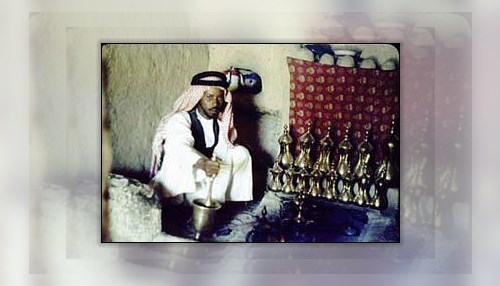
One Friday morning in the blue-tinted bedroom of our Dhahran duplex we awakened very early. We planned a picnic, not to Half-Moon Bay where everyone went, but to an artesian pool, a small lake north of Qatif, a seacoast town.

In this piece, Mark Lowey shares a touching tribute to Quriyan Al Hajri as told by Quriyan’s longtime friend and Aramco colleague, Richard Moffitt. Mark met Quriyan in 2013 when their chance encounter led Mark to reunite with the long-lost Bedouin families whom he had first met in 1978.
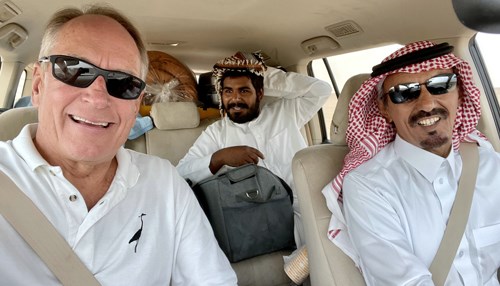
In this piece, Mark Lowey, “Abu Jack,” is escorted deep into the Rub Al Khali (Empty Quarter) and told the astonishing story of a water well named Umm Al Abel.
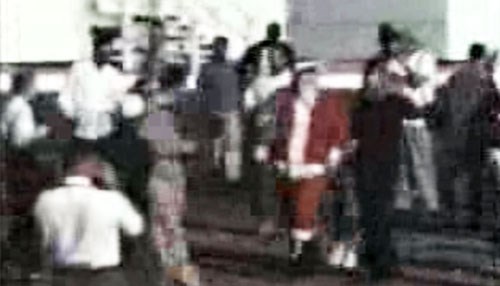
It was the winter of 1952. Aramco had just produced its 300 millionth barrel of oil. The Administration building was so new that the parking lot is still unpaved.
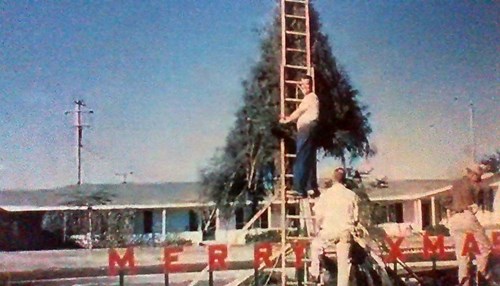
Tavy Sandin shared the following pictures of the first community Christmas tree in Dhahran. The pictures, taken in the very early '50s, are of the building of the first tree in the 7th St. Christmas Tree Circle. Tavy writes, "My dad, H.L. "Sandin" and his neighbors, one being Chuck Mathews, were responsible for the design and building of the tree. This all began about 1952 when the residents decided to enter the 7-unit portion of the Company-held competition for best Christmas decorations.
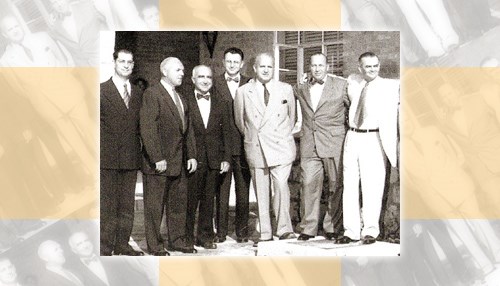
Midway through the 1950s, Aramco continues to flourish, achieving the distinction of becoming the world’s largest oil company. In 1955 the company reaches a milestone by pumping out barrel number 2 billion of Saudi Arabian crude.
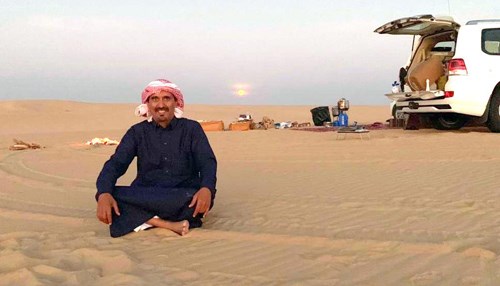
Atlantis of the Sands? A lost city? A meteorite impact site? For years, the mystery of Wabar fascinated a young associate professor of geology at King Fahd University of Petroleum and Minerals in Dhahran. This is the story of his travels to the site – in Saudi Arabia’s Empty Quarter...

The second half of 1954 is a time of great change for the Webster family as younger daughter Susan leaves Dhahran at the tender age of 13 to attend boarding school in Switzerland. With older daughter Judy still at the American Community School in Beirut, it is Ken and Mildred’s first taste of “empty nest syndrome” and they have decidedly mixed feelings about it.
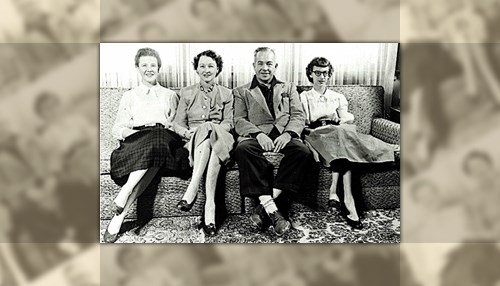
Newly crowned King Saud arrives in Dhahran for an extended stay during the first week of January 1954, followed by a long hunting trip throughout the Kingdom. Dhahran District Manager Ken Webster reports on His Majesty’s visit in detail and continues his regular family correspondence describing daily Aramco operations and newsworthy developments.

In September 1979, Mark Lowey completed a nearly two-year stint working in the oil fields of the Eastern Province in Saudi Arabia. Together with a colleague, he traveled to Kathmandu and then Pokhara, the gateway to the Himalayas’ Annapurna region in cemtral Nepal.

1953 is a memorable year in the history books. Most notably for Aramcons, it is the year when King Ibn Saud, the founder of Saudi Arabia, dies in the fall at the age of 73. His son, Crown Prince Saud, is named the new king by the royal family and another son, Faisal, is named crown prince.

Ken and Mildred Webster presented their younger daughter, Susan, with her own horse for her 12th birthday in January 1953. This was truly a momentous occasion in Susan’s childhood, as she was “horse crazy” from an early age and spent most of her free time riding and honing her horsemanship at The Hobby Farm for years prior to this special gift.

"The chief topic of conversation out here now is that the government has decreed NO MORE LIQUOR – ain't that something?" Crown Prince Saud pays a visit and Ken Webster and his daughters have an audience with him; Ken goes to Harvard Business School; Judy Webster graduates at top of her class from Dhahran Senior Staff School and goes to American Community School in Beirut.

In Part 1 of this story, we met Faisal Al Qahtani’s grandfather and his father, Salem Al Qahtani, and learned about their lives in the early 1900s. The story continues here in Part 2, as told by Faisal to Mark Lowey.
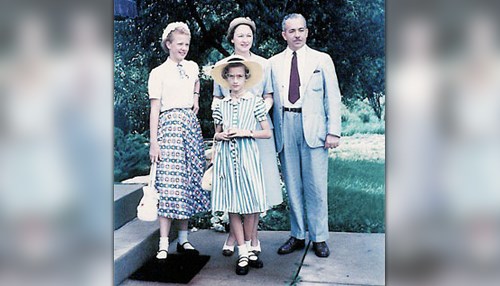
For Aramco, it is another year of record-breaking growth and oil production. And for Ken Webster, it is a year of exceptional professional achievement. In the spring of that year, he is appointed Dhahran District Manager, a post he will hold for more than six years.
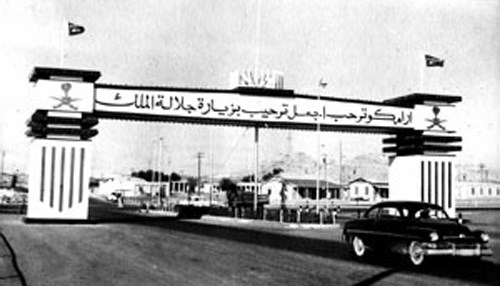
"There is a rumor of a big stir-up out here!" Another job change and more responsibility for Ken Webster, the family’s first local leave, the opening of the Trans-Arabian Pipeline, the continued expansion of Aramco in all parts of the Kingdom, and worldwide headlines for a former company secretary who swims the English Channel.
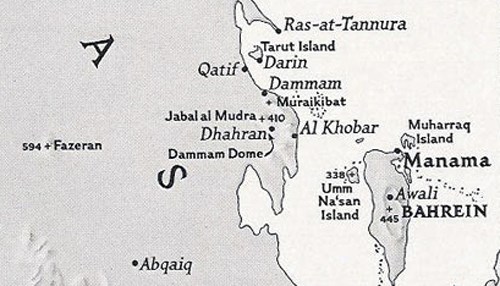
As Acting Manager of Aramco’s Transportation Department, Ken Webster embarks on many travels throughout Saudi Arabia in 1950 and describes them in detail to the folks back home in the States. From observations on the new Dammam deepwater port (a project to which his brother, Allyn, an assistant engineer, is assigned) to interesting descriptions of visits with Aramco exploration teams in the Empty Quarter, to tours of the King’s farms, to “lessons” in Muslim law and religious ceremonies, his fascination with and respect for the Arabs and Aramco shine through in every word.
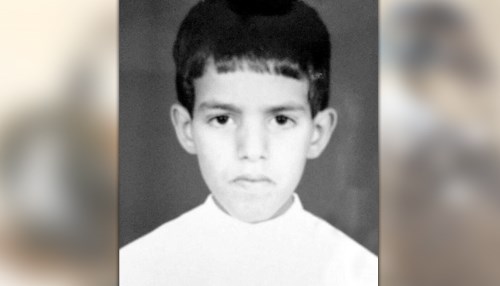
In this piece, Mark Lowey chronicles the story of Faisal Al Qahtani, a young falconer from Abqaiq, Saudi Arabia, who learned the ancient art of falconry – and life’s lessons – from his remarkable father.